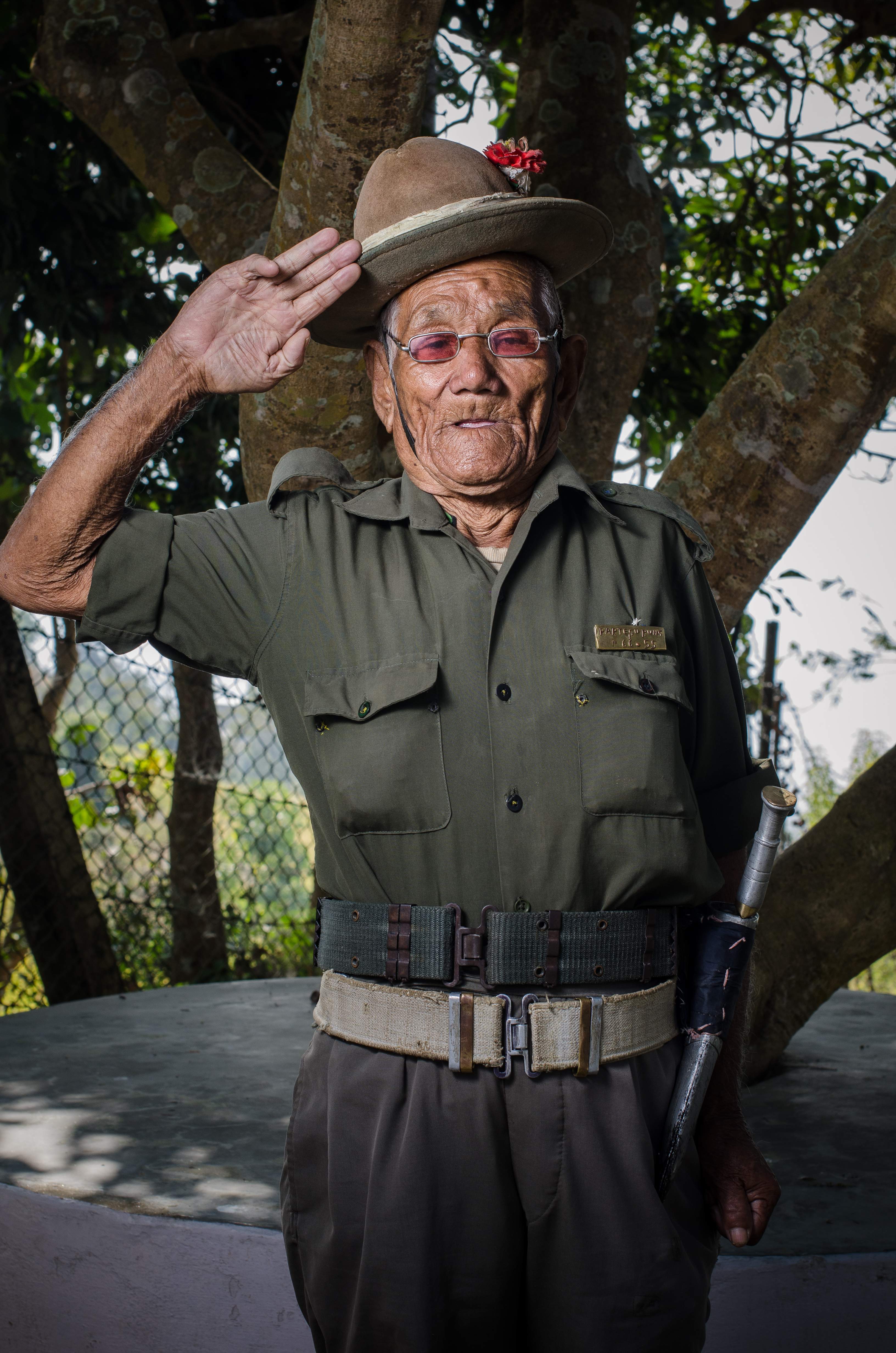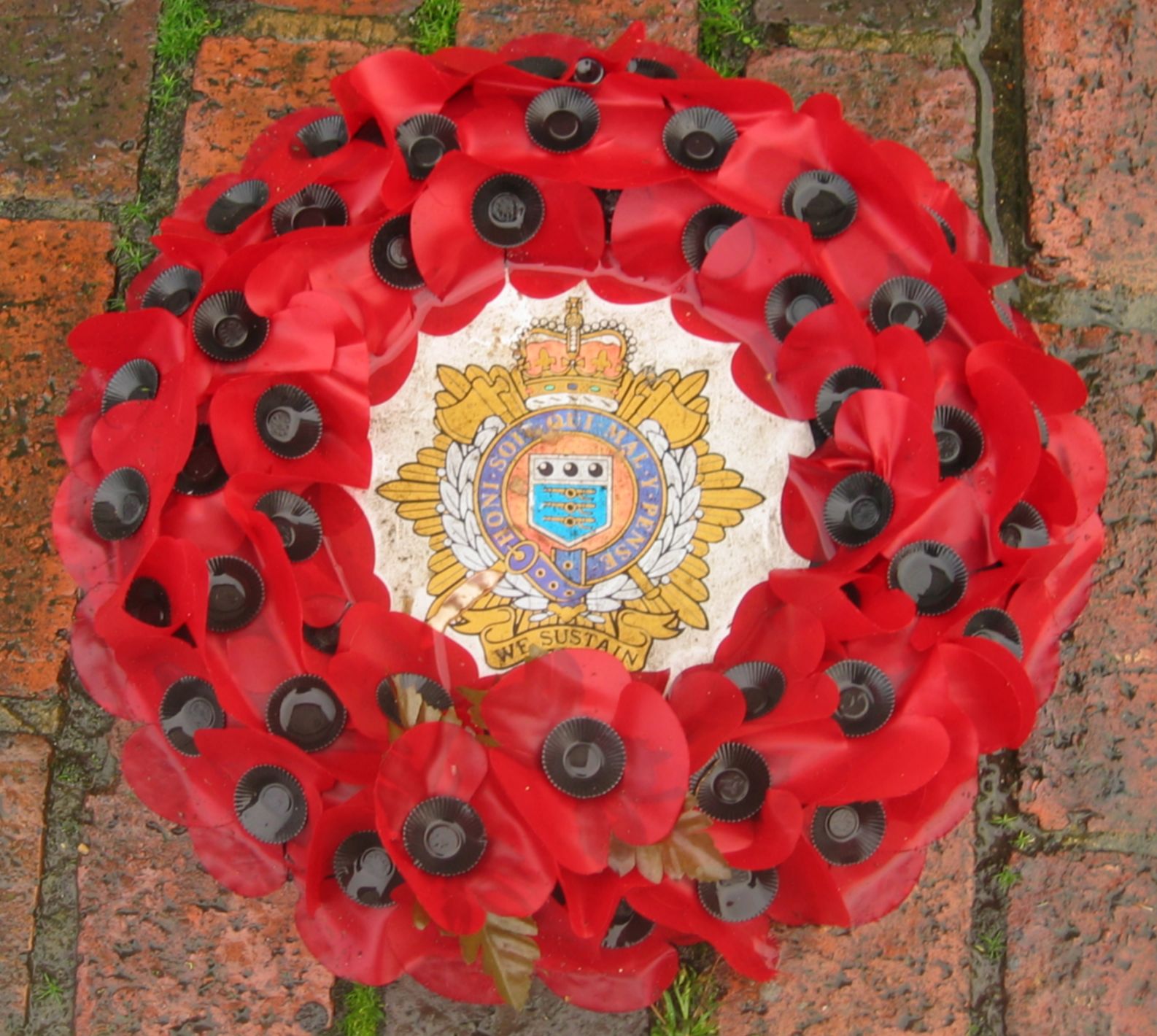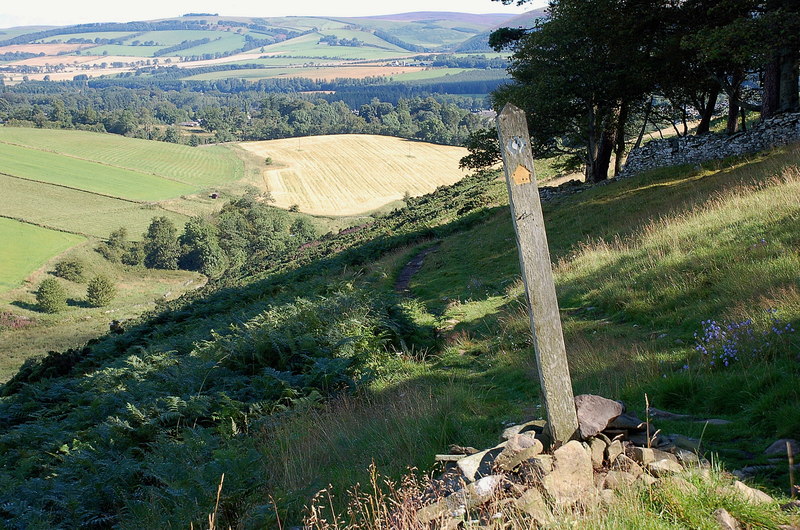|
Gerald Maitland-Carew
Captain Gerald Edward Ian Maitland-Carew CVO (born 28 December 1941) is a former Lord Lieutenant of Roxburgh, Ettrick and Lauderdale in Scotland. He served from March 2007 until December 2016, prior to which he was Deputy Lieutenant, from 1989 to 2007. Maitland-Carew was born into an Anglo-Irish aristocratic family, being the second son of The 6th Baron Carew by his Scottish spouse, Lady Sylvia Gwendoline Maitland, daughter of The 15th Earl of Lauderdale. His father, Lord Carew, was the owner of Castletown House in Celbridge, County Kildare, which is possibly the largest country house still standing (and not a ruin) anywhere in Ireland. As the Maitland's male entail had been broken, he inherited Thirlestane Castle through his mother, in 1971, when he also assumed the new surname of Maitland-Carew by Deed Poll. He is now trustee of both the Thirlestane Castle and Mellerstain House Charitable Trusts. Educated at Harrow School, he served in the 15th/19th The King's Royal Hussars ... [...More Info...] [...Related Items...] OR: [Wikipedia] [Google] [Baidu] |
Royal Victorian Order
The Royal Victorian Order (french: Ordre royal de Victoria) is a dynastic order of knighthood established in 1896 by Queen Victoria. It recognises distinguished personal service to the British monarch, Canadian monarch, Australian monarch, or New Zealand monarch, members of the monarch's family, or to any viceroy or senior representative of the monarch. The present monarch, King Charles III, is the sovereign of the order, the order's motto is ''Victoria'', and its official day is 20 June. The order's chapel is the Savoy Chapel in London. There is no limit on the number of individuals honoured at any grade, and admission remains at the sole discretion of the monarch, with each of the order's five grades and one medal with three levels representing different levels of service. While all those honoured may use the prescribed styles of the order – the top two grades grant titles of knighthood, and all grades accord distinct post-nominal letters – the Royal Victorian Order's ... [...More Info...] [...Related Items...] OR: [Wikipedia] [Google] [Baidu] |
Scottish Horse Trials Championships
Scottish usually refers to something of, from, or related to Scotland, including: *Scottish Gaelic, a Celtic Goidelic language of the Indo-European language family native to Scotland *Scottish English *Scottish national identity, the Scottish identity and common culture *Scottish people, a nation and ethnic group native to Scotland *Scots language, a West Germanic language spoken in lowland Scotland *Symphony No. 3 (Mendelssohn), a symphony by Felix Mendelssohn known as ''the Scottish'' See also *Scotch (other) *Scotland (other) *Scots (other) *Scottian (other) *Schottische The schottische is a partnered country dance that apparently originated in Bohemia. It was popular in Victorian era ballrooms as a part of the Bohemian folk-dance craze and left its traces in folk music of countries such as Argentina ("chotis"Span ... * {{disambiguation Language and nationality disambiguation pages ca:Escocès ... [...More Info...] [...Related Items...] OR: [Wikipedia] [Google] [Baidu] |
International League For Protection Of Horses
International is an adjective (also used as a noun) meaning "between nations". International may also refer to: Music Albums * ''International'' (Kevin Michael album), 2011 * ''International'' (New Order album), 2002 * ''International'' (The Three Degrees album), 1975 *''International'', 2018 album by L'Algérino Songs * The Internationale, the left-wing anthem * "International" (Chase & Status song), 2014 * "International", by Adventures in Stereo from ''Monomania'', 2000 * "International", by Brass Construction from ''Renegades'', 1984 * "International", by Thomas Leer from ''The Scale of Ten'', 1985 * "International", by Kevin Michael from ''International'' (Kevin Michael album), 2011 * "International", by McGuinness Flint from ''McGuinness Flint'', 1970 * "International", by Orchestral Manoeuvres in the Dark from '' Dazzle Ships'', 1983 * "International (Serious)", by Estelle from '' All of Me'', 2012 Politics * Political international, any transnational organization ... [...More Info...] [...Related Items...] OR: [Wikipedia] [Google] [Baidu] |
Gurkha Welfare Trust
The Gurkha Welfare Trust is a British charity (Reg. Charity No. 1103669) established in 1969. It is the principal UK charity for the provision of aid to Gurkha ex-servicemen and their dependants in their homeland of Nepal, and increasingly in the UK and elsewhere. Nepal has limited industry, agriculture and infrastructure. It also lacks an effective public social welfare system. This means that the work of the Trust is critical in improving conditions for ex-servicemen and their dependants, who are often unable to work through age, illness or injury. The Patron of the Trust is the Prince of Wales. The Trust has three Vice Patrons; Field Marshal the Lord Bramall of Bushfield KG GCB OBE MC JP DL, Field Marshal Sir John Chapple GCB CBE DL and Joanna Lumley OBE. Each year, by tradition, all serving officers and other ranks in the Brigade of Gurkhas contribute a day's pay to the Trust. History In 1969, it was realised that a great number of Gurkha soldiers and their depend ... [...More Info...] [...Related Items...] OR: [Wikipedia] [Google] [Baidu] |
Musselburgh Racecourse
Musselburgh Racecourse is a horse racing venue located in the Millhill area of Musselburgh, East Lothian, Scotland, UK, close to the River Esk. It is the second biggest racecourse in Scotland (the first being Ayr) and is the fourteenth biggest in the UK. In 2016, Musselburgh staged 28 fixtures. It was officially known as "Edinburgh Racecourse", and referred to as such in the English press, until the beginning of 1996 but was widely referred to as "Musselburgh" in Scotland long before that and was widely referred to as Musselburgh in the racing pages of Scottish newspapers."To-day at Musselburgh", ''The Glasgow Herald'' page 11, 22 April 1963 The course offers both flat racing and National Hunt meetings (though it only introduced jumping in 1987) and is 2 km long. In the middle of the course is a nine-hole golf course, Musselburgh Links, dating from at least 1672. The Royal Musselburgh Golf Club was founded there in 1774. Location The racecourse itself sits on Musselburg ... [...More Info...] [...Related Items...] OR: [Wikipedia] [Google] [Baidu] |
The Royal British Legion
The Royal British Legion (RBL), formerly the British Legion, is a British charity providing financial, social and emotional support to members and veterans of the British Armed Forces, their families and dependants, as well as all others in need. Membership Service in the armed forces is no longer a requirement of Legion membership. The Legion has an official membership magazine, ''Legion'', which is free to all Legion members as part of their annual subscription. History The British Legion was founded in 1921 as a voice for the ex-service community as a bringing together of four organisations: the Comrades of the Great War, the National Association of Discharged Sailors and Soldiers and the National Federation of Discharged and Demobilised Sailors and Soldiers, and incorporated the fundraising department of the Officers' Association. Field Marshal The 1st Earl Haig (1861–1928), British commander at the Battle of the Somme and Passchendaele, was one of the founde ... [...More Info...] [...Related Items...] OR: [Wikipedia] [Google] [Baidu] |
Gala Water
The Gala Water ( Lowland Scots: Gala Watter; Scottish Gaelic An Geal Ath) is a river in the Scottish Borders area of Scotland and a tributary of the River Tweed. It is sometimes known as the "Gala", which nickname is also shared with Galashiels, which it flows through. The "Braw Lads O Gala Watter" is a song about people from Galashiels. Etymology The name ''Gala'' may be from the Old English ''galga'' meaning "gallows" ( Scots ''galwe''), perhaps by back-formation from Galashiels. Or else, ''Gala'' may originally be from Brittonic, and derived from ''*gāl'' meaning "enmity, hatred" ( Welsh ''gâl''), or cognate to the Welsh verb ''galw'', "call" ( Cornish ''galow'', "a call"). The river may share an etymology with Gala Lane in Ayrshire, which flows into Loch Doon. Levels At Galashiels the depth of the water is between and , although was as deep at on one occasion in 2002. See also *List of places in the Scottish Borders *Leader Water The River Leader, or Leader Water, i ... [...More Info...] [...Related Items...] OR: [Wikipedia] [Google] [Baidu] |
Lauderdale
Lauderdale is the valley of the Leader Water (a tributary of the Tweed) in the Scottish Borders. It contains the town of Lauder, as well as Earlston. The valley is traversed from end to end by the A68 trunk road, which runs from Darlington to Edinburgh. Roman road Many ancient camps, and many ''tumuli'', are found in Lauderdale. The Roman road into Scotland, Dere Street, which means "the road into the country of the wild animals", crossed a ford at Newstead, near Melrose, where there had been a Roman fort and garrison, and entered Lauderdale. Dere Street is said to have been reconditioned by King Malcolm Canmore and probably used by him in his almost constant warfare against England. The Roman road has now been traced from the Tweed through Lauderdale to Soutra. Etymology Lauderdale's name comes from the town of Lauder rather than the Leader Water. The relationship between the names "Leader" and "Lauder" is very obscure; despite their similarity, they may have different orig ... [...More Info...] [...Related Items...] OR: [Wikipedia] [Google] [Baidu] |
Royal Company Of Archers
The Royal Company of Archers, The King's Bodyguard for Scotland is a ceremonial unit that serves as the Sovereign's bodyguard in Scotland—a role it has performed since 1822 during the reign of King George IV when the company provided a personal bodyguard to the King on his visit to Scotland. It is currently known as the King's Bodyguard for Scotland or, more often and colloquially, The Royal Company. It is located in Edinburgh, the capital city of Scotland. The Royal Company of Archers has a long history in Scotland as a body that celebrated both the recreation and talent of local archers. As a body established by the Monarch, the company has a long history of unique prizes, influential supporters, and ceremonial roles. It has an associated charity, "The Royal Company of Archers Charitable Trust", dedicated to helping disadvantaged individuals with their health and wellbeing in Scotland. Early history During the 17th and 18th centuries in Scotland, a muster or military ren ... [...More Info...] [...Related Items...] OR: [Wikipedia] [Google] [Baidu] |
Brigadier
Brigadier is a military rank, the seniority of which depends on the country. In some countries, it is a senior rank above colonel, equivalent to a brigadier general or commodore, typically commanding a brigade of several thousand soldiers. In other countries, it is a non-commissioned rank. Origins and history The word and rank of "Brigadier" originates from France. In the French Army, the Brigadier des Armées du Roi (Brigadier of the King's Armies) was a general officer rank, created in 1657. It was an intermediate between the rank of Mestre de camp and that of Maréchal de camp. The rank was first created in the cavalry at the instigation of Marshal Turenne on June 8, 1657, then in the infantry on March 17, 1668, and in the dragoons on April 15, 1672. In peacetime, the brigadier commanded his regiment and, in maneuvers or in wartime, he commanded two or three - or even four - regiments combined to form a brigade (including his own, but later the rank was also awarded to l ... [...More Info...] [...Related Items...] OR: [Wikipedia] [Google] [Baidu] |
Territorial Army (United Kingdom)
The Army Reserve is the active-duty volunteer reserve force of the British Army. It is separate from the Regular Reserve whose members are ex-Regular personnel who retain a statutory liability for service. The Army Reserve was known as the Territorial Force from 1908 to 1921, the Territorial Army (TA) from 1921 to 1967, the Territorial and Army Volunteer Reserve (TAVR) from 1967 to 1979, and again the Territorial Army (TA) from 1979 to 2014. The Army Reserve was created as the Territorial Force in 1908 by the Secretary of State for War, Richard Haldane, when the Territorial and Reserve Forces Act 1907 combined the previously civilian-administered Volunteer Force, with the mounted Yeomanry (at the same time the Militia was renamed the Special Reserve). Haldane planned a volunteer "Territorial Force", to provide a second line for the six divisions of the Expeditionary Force which he was establishing as the centerpiece of the Regular Army. The Territorial Force was to be comp ... [...More Info...] [...Related Items...] OR: [Wikipedia] [Google] [Baidu] |




